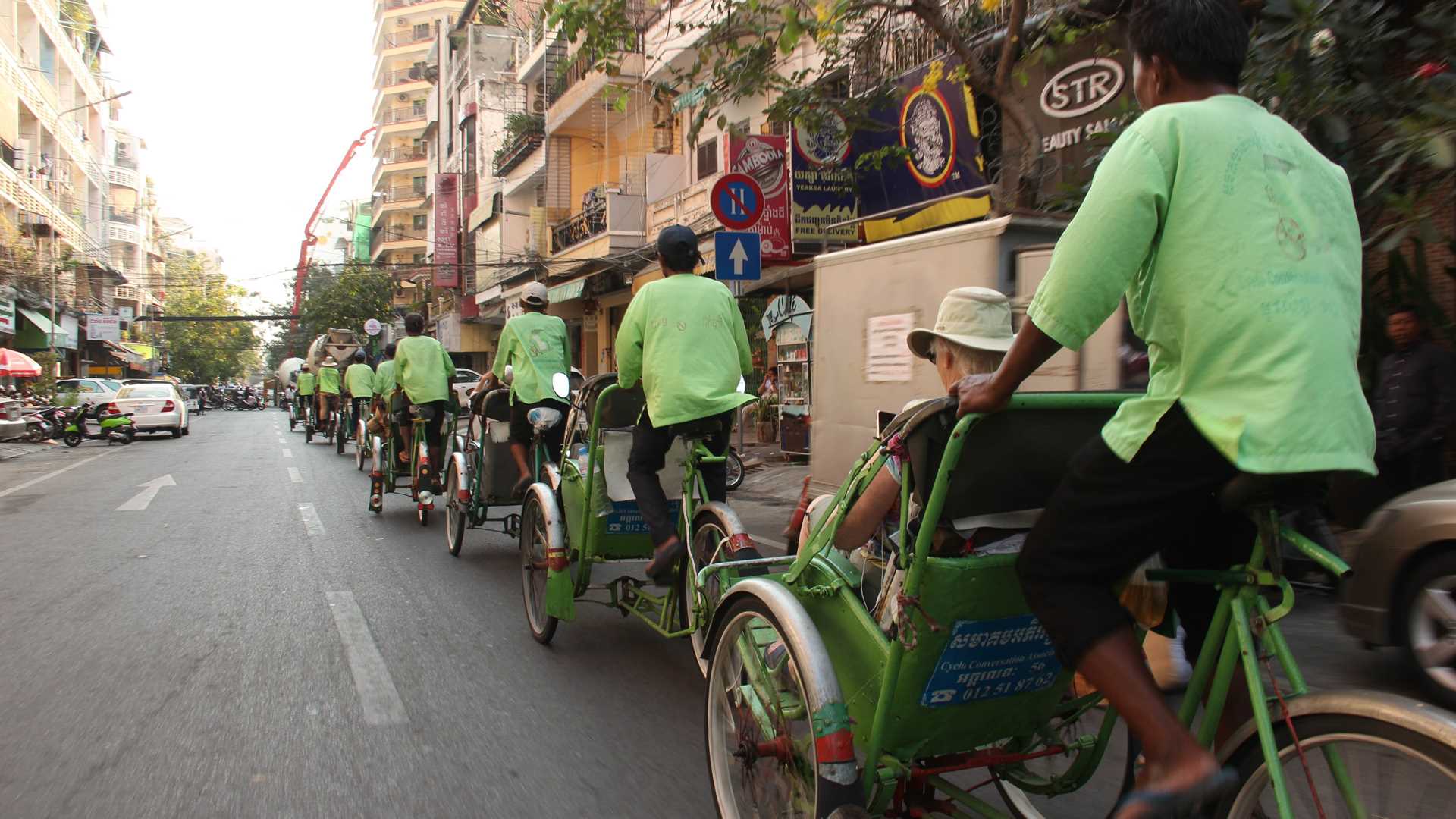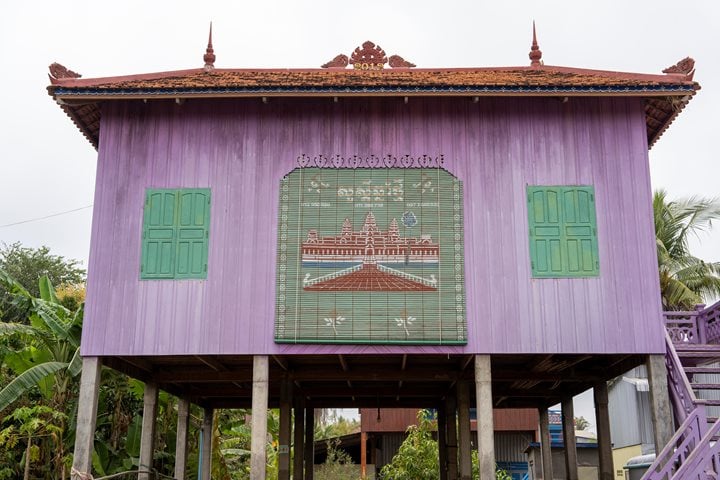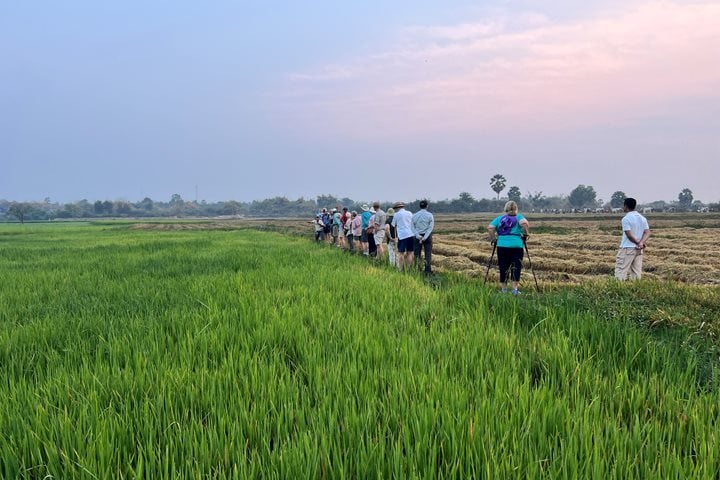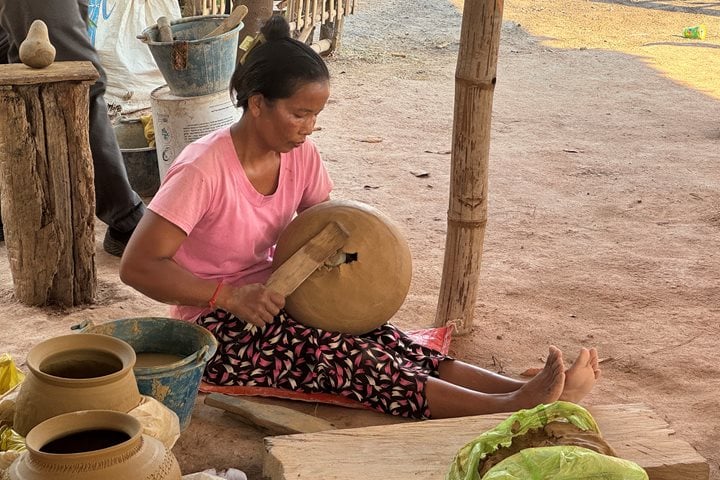Our first day ashore in Cambodia put us before the sprawling capital city of Phnom Penh. With more than 1.5 million inhabitants and nearly seven times over the population size of the country’s next biggest municipality, Phnom Penh presents an aspect of Khmer culture that is not found anywhere else in Cambodia. The broad boulevards of the 1960s and characteristic modernist “New Khmer” architecture of Vann Molyvann has only recently given way to unbridled mass development, with dozens of towering high-rises now under constructions across the city. With a skyline that seems to ascend higher by the month, 21st century Phnom Penh is undergoing unprecedented change.
We start the morning with another form of local transport known as a cyclo, a cultural reflection of the French colonial period. We stroll through the charming gardens and regal architecture of the Royal Palace, marvelling at the masterpiece that is the Royal Treasury, the gold Buddha, Maitreya. Nearby, the National Museum showcases the finest collection of Khmer art, with elaborately carved stone sculptures representing the gods of the Hindu pantheon. With artefacts spanning almost 2,000 years, the museum focuses primarily on the Angkorian period and serves as a fitting appetiser for the incredible monuments to come.
The afternoon, however, takes on a drastically different tone as we learn that Cambodia continues to recover from the Khmer Rouge regime of the 1970s, one of the most horrific regime changes ever seen this region. While lasting only four years, the regime has left an indelible mark on the Khmer people and their collective memory.
Cambodians are all the more remarkable in their resilience and their ability to move on, resolve which we cannot even begin to appreciate without first attempting to understand the country’s tumultuous past. We head first to the Tuol Sleng prison (S-21) and then later to Cheung Ek (the Killing Fields), a national memorial and one of the hundreds of sites that witnessed the execution of almost 2 million people.
Our final cultural experience, and one of great contrast to the previous, is perhaps the finest of Khmer culture: a dinner and dance performance by an Apsara dancing troupe. Once exclusively the private entertainment of the royal court, today we can all witness the exquisite balance, choreography, and grace of those women and men who keep this tradition thriving in the present day.







